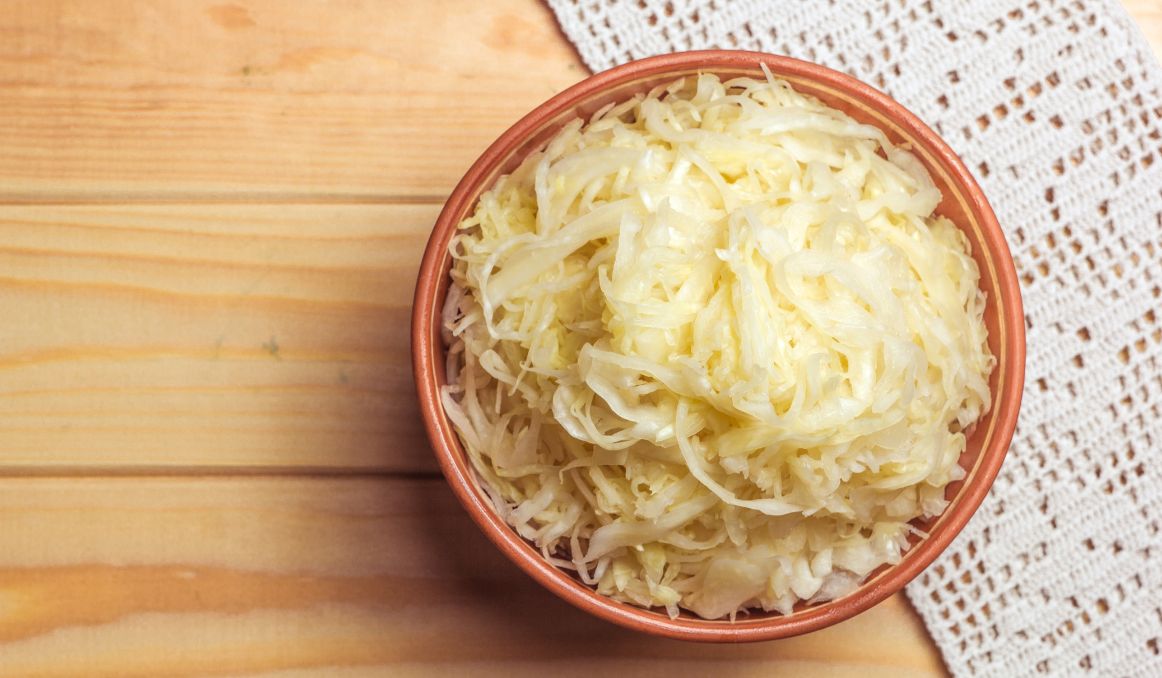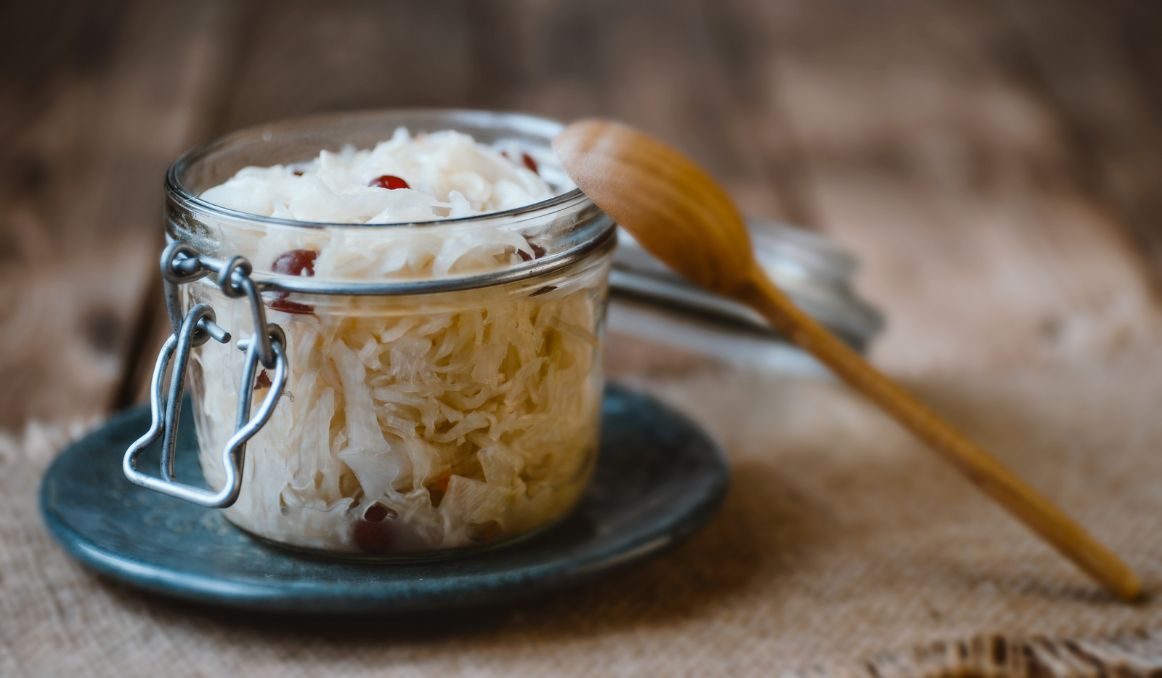What probiotics are in fermented sauerkraut?
We have a major gut health issue across the world but especially in the west. Thus, many people are now discussing gut health and what they can do.
Fermented foods are one great way to keep your gut healthy because they have something called probiotics.
If you make fermented foods for those who love them, you may be wondering what probiotics are in foods like sauerkraut so that you know what you tell your consumers.

Gut Health
For decades, the western world has been obsessed with cleanliness and sanitation, which is a great thing of course.
But, as we know, there is such thing as too much of a great thing.
Bad Bacteria!
What happened in the west is that we decided collectively that all bacteria were bad and needed to be killed.
So, we released dozens of products onto the market that promised to kill 99.9% of bacteria. We gave children and adults antibiotics (which kill bacteria) for every cough, sneeze, and ear infection.
And we created a monster.
We essentially interfered with the human immune system’s ability to fight disease, resulting in children with more allergies, adults with leaky gut, and generations of people with unnecessary health issues.
Now, of course, the problems were not caused exclusively by excessive antibiotics and too much hand sanitizer and bleach. We also have to look at our diets rich in highly processed foods and absent of plants.
But the end result is the same, an unhealthy population and superbugs that are now resistant to antibiotics and cleaners.
And all the while, we did not realize that bacteria is actually our friend!
Yes, humans actually, naturally, have over 200 species of bacteria, viruses, and fungi living in our guts and digestive tracts, and, when in proper balance, those species keep us thriving.
A poorly balanced gut, with not enough good bacteria, can cause a range of health issues from diabetes to eczema, from fatigue to mental health disorders like depression and anxiety.
The gut is the heart of our entire system, at least the part of the system with which we can directly interact.
Good Bacteria
So, how do we get our guts into balance? How do we promote good bacteria thriving in our guts?
Well, a few things are under our control.
Exercise
Daily exercise gets things moving in your system. Most recommendations center around 30 minutes a day of consistent movement. You could simply take a walk outside with your favorite podcast in your ears, and you will be promoting good gut health.
Sleep
When you sleep, you allow your body to heal itself and function properly.
A lack of sleep stagnates things in your body.
Aim for at least 7 hours of sleep each night, which means ideally you should be setting yourself up for closer to 8, so if you fall short, you will still hit the mark.
A rested gut is a healthy gut.
Meditate
Having a daily meditation practice has been shown to solve myriad health problems, from mental health to, you got it, gut health.
Try to sit for at least 10 minutes every day and just quiet your mind.
The body is a self-healing, well designed machine. All we need to do is get out of its way.
Eat Probiotics and Prebiotics
And finally, and you had to know this one was coming, look at your diet.
You are what you eat, so whatever is going into your body has to run through your gut, and it will either act as benevolent medicine or slow poison.
Probiotics are the good bacteria in your gut that keep your entire system healthy, and you can get them from fermented foods like yogurt, kimchi, kombucha, pickles, and sauerkraut.
Prebiotics are the foods that feed your probiotics. Gut bacteria love leafy greens, broccoli, and raw onions and garlic. The more spices and herbs you add to your body, the better it will function.
Sauerkraut

Sauerkraut is one of the foods richest in probiotics. Just two tablespoons of sauerkraut offer all the daily recommended colony-forming units that you will need for optimal gut health in a day.
Sauerkraut has a probiotic bacteria called lactic acid bacteria, or LAB, and it can also contain three other species in different concentrations: Leuconostoc mesenteroides, Lactobacillus brevis, and Lactobacillus pantarum.
One of the great benefits of sauerkraut is that the bacteria it contains are strong enough to make it through your stomach acid and into your small intestine, where it can do its best work, colonizing and carrying out its health benefits.
For sauerkraut manufacturers, it is good to be mindful that shelf stable sauerkraut, the kind consumers find in a giant jar or in a can in the store, has likely killed off all the good bacteria you are looking for.
So, a big selling point for smaller, more local manufacturers is that you can promote your product as filled with freshly fermented probiotics that must be kept refrigerated.
Marketing is everything, and when you show your audience how your sauerkraut fits into their overall gut health, your product will fly off the shelves.
Making Sauerkraut
And making sauerkraut is so simple!
It is, after all, just sour cabbage, as the German translation implies.
And the nice thing is your sauerkraut does not have to be super sour, or it can be. In fact, you can offer two different versions for your consumers.
The Pioneer Woman has an excellent recipe small and medium sized manufacturers can use as a starting point that maintains a neutral flavor for those not into the overly vinegary effect of some fermented foods.
All you need is:
- Fresh cabbage
- Salt
All she does is cores the cabbage, shreds it, rinses it, and adds the salt.
She kneads the cabbage well in a bowl to release all the liquid to create a brine.
Finally, she packs the shredded cabbage firmly into a jar and covers it with the liquid left in the bowl. If the liquid does not cover the cabbage, she tops it off with a saltwater solution.
She then screws the lid onto the jar and sits it in a cool, dry, dark space for several days and up to a few weeks at room temperature.
The bacteria will do the rest!
Your biggest selling point as a sauerkraut manufacturer is taking all the guesswork and weeks of prep out of the process of your consumers.
They can get a version of this fresh and easy sauerkraut, with your spin on it, with the comforting knowledge that they are getting healthy probiotics that have been well fermented for them.
Cheers!
Passionate about yeast fermentation and all the wonders it can do? So are we! If you’re interested in finding out how you can use our technology to control fermentation and monitor your yeast, save work hours and improve the cost-efficiency of your business, drop us a line at [email protected]
Also, check out these product pages, if you’re into beer or wine making:
- Oculyze BB 2.0 (Better Brewing) Yeast Cell Counter App + Hardware
- Oculyze FW (Fermentation Wine) Yeast Cell Counter App + Hardware
…or our custom solution page for other use cases (yours included):
Sources:


